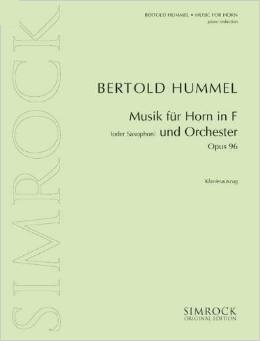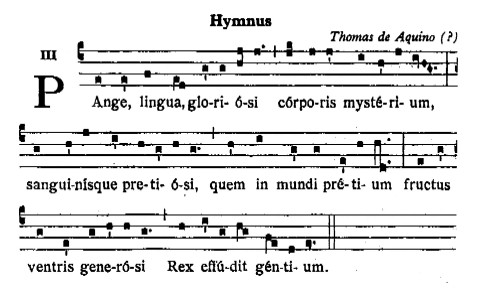Music for Horn in F and Orchestra, op. 96a (1993)

Orchestra: 2.2.2.2 - 3.3.2.1 - Timpani, Percussion. <2>, Strings
Duration: 18 Minutes
Publisher:
N. Simrock Hamburg-London (Boosey & Hawkes)
Piano
reduction: EE 5306 / ISMN: 979-0-2211-2085-4
The
"Music for Horn in F and Orchestra" ,
op. 96a (1993) has the character of an instrumental ballade with rhapsodic
elements, in which the soloist takes, so to speak, the role of the narrator. This
work in one movement is subdivided into seven sections of contrasting dynamic
and rhythmical structure.
The piece opens with an eight-part sound, unfolding
like a fan, which is re-used several times in the course of the piece to separate
sections. A diatonic, lyrical theme in the solo instrument develops to a first
climax. The second section is an allegro over rhythmically beating basses, opening
into an orchestral tutti. The Gregorian hymn "Pange, lingua, gloriosi"
is cited in the third section, to be then combined in a fourth section with the
beating allegro of the second.
In the next formal section, the complete material
of the work - whose beginning is clearly signalled by the abrupt breaking-off
of a rising passage - is reworked in a kind of development with short orchestral
and solo episodes. A last build-up leads into a cadenza for the soloist, which
forms the penultimate section. In the coda, the plainchant motif undergoes jazz-like
transformations; then a 16-part chord is built up, out of which the Horn emerges
with its final musical word - with a B-A-C-H (B-Flat - A - C - B) motif of which
hints had previously been audible. A reserved E-Flat chord with a fading upwards
glissando closes the work in an extreme pianissimo.
Bertold Hummel
